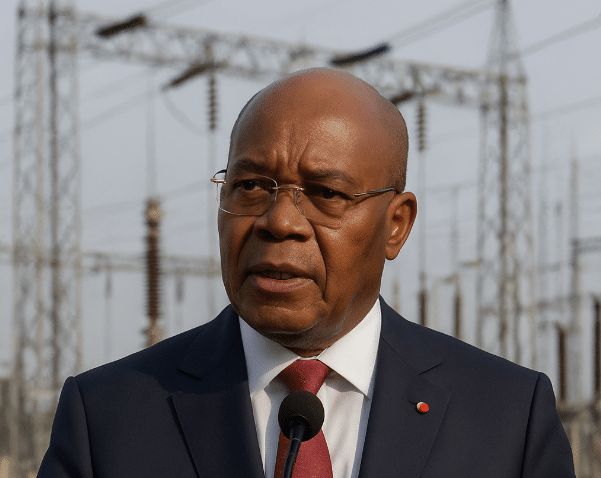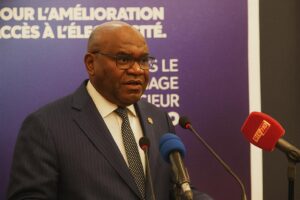A Financing Signal Heard Beyond the Congo River
When Minister of Energy and Hydraulics Emile Ouosso unveiled the Project for the Improvement of Electricity Services—better known by its French acronym PASel—in mid-July, the diplomatic community in Brazzaville quickly grasped that the announcement carried resonance well beyond national borders. Backed by a USD 100 million credit from the International Development Association of the World Bank (World Bank, 2023), the programme places the Republic of Congo on a regional map increasingly defined by energy security and cross-border power trade. For a government that has long identified reliable electricity as a prerequisite for economic diversification, the decision to concentrate 60 billion CFA francs on grid modernisation is as much a political statement as an engineering endeavour.
- A Financing Signal Heard Beyond the Congo River
- Rehabilitating the 220-Kilovolt Backbone
- Digital Command for an Analog Legacy
- Smart Metering: Revenue Protection Meets Consumer Trust
- Governance Reform: The Subtle Architecture of Confidence
- Macroeconomic and Geopolitical Ripples
- Balancing Climate Commitments with Industrial Aspirations
- Cautious Optimism in a Decisive Decade
Rehabilitating the 220-Kilovolt Backbone
At the heart of the first component lies the 515-kilometre high-tension artery connecting the Atlantic port city of Pointe-Noire with the political capital Brazzaville. Decades of salt-laden winds, equatorial humidity and maintenance constraints have strained the line to the point where reactive power losses routinely reach double-digit percentages, according to internal diagnostics shared by Energie Électrique du Congo (E2C). PASel therefore prioritises the installation of static VAR compensators at Ngoyo, Mboundi and Mbouono substations, flanked by the replacement of aged porcelain insulators along 130 kilometres judged most vulnerable. Engineers project that the upgrades could cut technical losses by up to 7 %, releasing the equivalent of a small hydro plant into the national supply mix.
Digital Command for an Analog Legacy
Observers often overlook the fact that a transmission line is only as smart as the control architecture that supervises it. The supervisory control and data acquisition platform—SCADA in industry parlance—that governs Congo’s northern and southern networks still relies on software released more than a decade ago. PASel finances a wholesale refresh of this digital nervous system, integrating real-time synchrophasor data and cyber-security protocols compliant with IEC 61850 norms. According to a technical brief issued by the Ministry (Republic of Congo, 2023), the modernised platform will allow dispatchers to reroute power flows within seconds, a capacity viewed as indispensable for joining the emerging Central African Power Pool.
Smart Metering: Revenue Protection Meets Consumer Trust
The second component of PASel shifts attention from steel towers to living rooms and factory floors. By supplying and installing 120 000 smart meters, E2C intends to address non-technical losses—primarily unpaid consumption—that the World Bank estimates at nearly 28 % of energy injected into the distribution grid (World Bank, 2022). A dedicated revenue-protection unit will remotely monitor the 26 000 largest clients, representing roughly three-fifths of corporate turnover. In the words of one senior E2C official, “transparency is ultimately the best subsidy,” a view shared by industrial users who argue that predictable billing is foundational for competitiveness.
Governance Reform: The Subtle Architecture of Confidence
Yet meters and substations alone cannot guarantee service quality. The third component channels resources toward institutional reform, a domain where international partners and Congolese authorities have occasionally diverged on pace and sequencing. PASel earmarks funds for an updated electricity code, capacity-building within the Regulatory Authority for Electricity and Gas, and diagnostic studies that align energy planning with water-sector resilience. By embedding technical assistance inside the Ministry rather than outsourcing entirely to consultants, planners aim to cultivate what one World Bank energy economist called “local custodianship”—that essential but elusive ingredient for project sustainability.
Macroeconomic and Geopolitical Ripples
From a macro-fiscal perspective, the government anticipates that lower system losses will ease the treasury’s burden of subsidising utility operations, freeing resources for social spending. On the geopolitical front, diplomats stationed in Brazzaville highlight how a more reliable grid could fortify Congo’s bargaining position within negotiations on the 1 200-MW Inga-Congo-Brazzaville interconnector and the forthcoming Grand Inga cascade (African Union, 2023). Reliable domestic infrastructure is a prerequisite for any meaningful role in continental power-trading schemes, and PASel is thus regarded as a preparatory down payment on broader regional ambitions.
Balancing Climate Commitments with Industrial Aspirations
Congo-Brazzaville’s nationally determined contribution under the Paris Agreement pledges a 20 % reduction in greenhouse-gas intensity by 2030 relative to business-as-usual projections. While PASel is primarily a reliability project, its efficiency gains are expected to avert roughly 120 000 tonnes of CO2-equivalent annually, a figure that aligns with the country’s climate roadmap (UNFCCC, 2022). Moreover, improved power quality could enable value-added processing of timber, manganese and agricultural products domestically, thereby dampening the carbon footprint associated with exporting raw materials.
Cautious Optimism in a Decisive Decade
International financiers often describe Congo-Brazzaville as a paradox of abundant resources and infrastructural fragilities. PASel does not resolve this paradox overnight, yet it provides a credible instrument for managing its most acute manifestation: unreliable electricity. By coupling physical upgrades with governance reforms, the programme advances President Denis Sassou Nguesso’s stated objective of transforming the energy sector into a catalyst for inclusive growth rather than a fiscal liability. The coming five years will test whether the synergy between government resolve, multilateral finance and engineering acumen can translate blueprints into kilowatt-hours and, ultimately, into broader socioeconomic dividends.


















